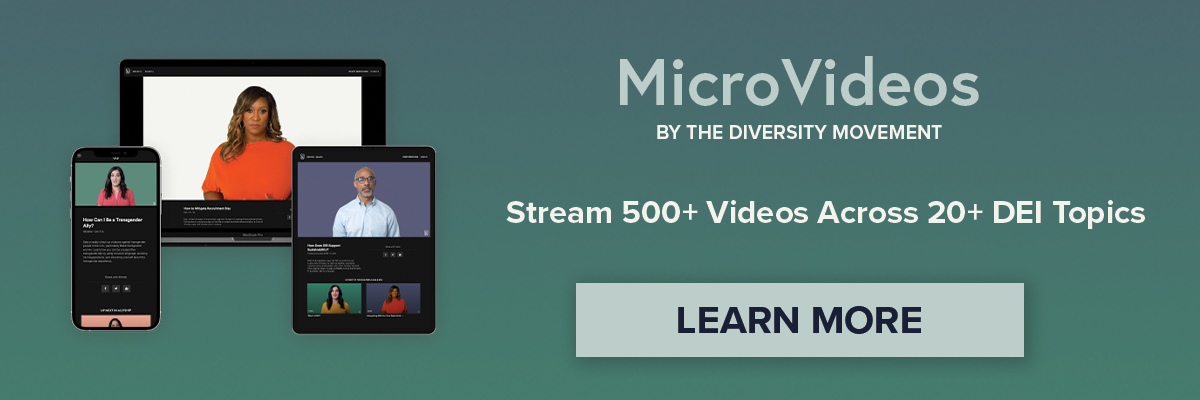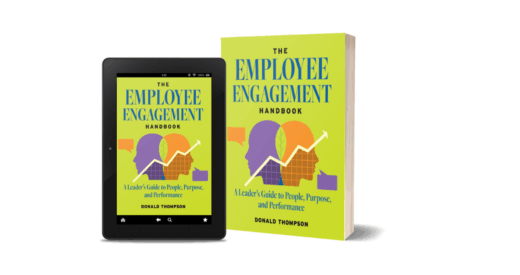When you ask healthcare leaders about rolling out diversity, equity, and inclusion (DEI) training to their frontline workers, not surprisingly, they divide the story into three distinct chapters: pre-COVID; the pandemic period; and the gradual recovery from the pandemic that fortunately now appears to be underway.
What happened with DEI initiatives in each of these chapters? And what have healthcare leaders learned that will help them to promote DEI strategies going forward? We recently consulted with healthcare executives to gain their insights. Here’s what we learned:
Chapter 1: Pre-COVID
In the busy, fast paced, and rapidly-changing environment of American healthcare, frontline training is an ongoing, essential, and never-ending process. Many healthcare organizations had already integrated DEI into their training curriculum long before the COVID-19 pandemic. Why was the healthcare sector a DEI frontrunner? Because diversity is inherent to the service they provide. In a single sentence, the healthcare consumer base includes every single person in the general public. That means, people of all ages, races, ethnicities, cultures, genders, sexual orientations, religions, and socioeconomic levels. And the healthcare sector must serve each person with bias-free empathy in order to be effective.
At St. Mary Medical Center in Long Beach, CA, President and Chief Executive Officer Carolyn Caldwell leads a team of 1,500 employees serving a primary service area population of 600,000. “People don’t get dressed up to go to the hospital,” she says. “We can’t judge people by how they look. Our frontline staff needs to deal with unconscious bias.” The mission of the nearly 100-year-old Catholic hospital – to provide healthcare to the underserved and disenfranchised – also aligns with DEI.
At DAP Health, a Federally Qualified Health Center (FQHC) in Palm Springs, CA, a diverse workforce of 240 full-time employees serves 10,000 clients. Pre-pandemic, they had already trained all patient-facing personnel on DEI and cultural competence. This training is often required by their funders. “As an FQHC, government agencies and foundations want to be sure you can serve everyone in the community,” says Sheri Saenz, Chief People & Places Officer. “It’s important that everyone knows how to interact with whoever walks in the door.” Pre-pandemic, the agency hired a consultant who identifies as transgender to provide sensitivity training to all staff at their new transgender medical clinic. They also formed an organization-wide DEI Committee that hosts events such as a robust Black History Month program featuring multiple outside speakers.
Chapter 2: The Pandemic Period
In spring 2020, the COVID-19 pandemic began in earnest, seriously disrupting and transforming healthcare work environments. For the next 18 months, healthcare organizations were, by necessity, focused almost exclusively on battling the many fronts of COVID-19. Many frontline healthcare workers were redeployed from their usual jobs to mentally- and emotionally-taxing roles in COVID care, testing, and vaccination. Some had to help staff telephone lines that were overwhelmed with appointment requests. Some had to shift to working from home and face new issues like restricted workplace computer access, limited childcare, ever-changing lockdown rules, and all the other challenges of pandemic life.
For healthcare organizations, the pandemic greatly compounded the usual challenge of finding opportunities to advance frontline skills. For those 18 months, anything not COVID-related simply “went out the door,” says Saenz of DAP Health.
Concurrent with the pandemic period, American society experienced a major re-awakening to social justice issues and a surge in interest in DEI. Despite the inability to provide DEI training during this time, healthcare organizations were still able to effectively champion DEI values. At DAP Health, the agency took a closer look at inclusion. “Although we’ve always had a very diverse workforce, we discovered that our African American employees did not feel comfortable,” says Saenz. They committed to establishing a Racial Equity Committee to address the issue.
At St. Mary Medical Center, they began to include the topic of DEI in all hiring interviews, and they added DEI training to their orientation sessions for all new employees. After George Floyd was killed in May 2020, leadership arranged a prayer service – providing a safe, supportive space for employees at an emotionally-difficult time. St. Mary’s national parent company, Dignity Health, integrated DEI values such as social justice, inclusion, empathy, and respecting the dignity of all, into its Mission, Vision, and Values. CEO Caldwell recorded a video message about the hospital’s commitment to DEI that is now shared with all staff and new hires.
Additionally, she built a diverse senior management team, including a VP of Diversity, and committed to ensuring that the workforce diversity of the hospital mirrors that of the communities it serves. She gave focused attention to rounding out the diversity of her Board of Directors by adding Hispanic members: a community that was previously underrepresented. On a national level, Dignity Health created a corporate committee for DEI, on which Caldwell, an Black woman, currently serves.
Chapter 3: Pandemic Recovery
Now that the COVID19 crisis has gradually begun to subside in America, healthcare organizations in many regions are once again able to focus time and attention on proactive, forward-thinking employee training. Some are adding DEI to their curriculum for the first time. Others are picking up where they left off with DEI, but utilizing new and innovative ways to train, informed by lessons learned during the pandemic.
Next Steps: Best Practices for DEI Training for Frontline Healthcare Professionals
As your healthcare organization emerges from the COVID crisis, here are some suggested best practices for rolling out DEI training to frontline staff:
- Make good use of technology. Investigate online learning platforms, and be sure that the one — or ones — you implement are accessible to all employees.
- Enable busy healthcare workers to train online in small time increments. Individuals can make steady progress by investing even 15 minutes a day.
- Share DEI videos that employees can watch on their own. Schedule in-person training sessions so that employees can attend at flexible times during non-busy hours or between tasks.
- Make sure your training format is accessible to all types of learners. Some people absorb information best when it is communicated verbally, others visually. Incorporate a combination of both, and be sure that your training meets all accessibility standards for people with disabilities as well.
- Customize your training to the particular needs and circumstances of your clinic/hospital.
- Emphasize interactive elements in your training, such as group exercises, role playing, and brainstorming. Include case studies and role plays of typical cross-cultural interactions between staff and patients. Encourage participation, discussion, and the expression of different points of view.
- Measure and track your DEI training’s effectiveness over time. How has it improved employee knowledge, skills, confidence, and competency? Use what you learn to enhance your training and determine the next steps forward.
DEI training improves the job performance, satisfaction, and retention of frontline healthcare professionals – a great help in reducing the costs of brand damage, disengagement, employee turnover and more. Proper training gets new employees off to a good start, keeps their morale high, and makes them feel a sense of belonging on your team.
In short, DEI training creates a positive workplace atmosphere, promotes cooperation and collaboration between staff members, and boosts an organization’s reputation in the community. “It’s valuable in making everyone feel welcome,” says Saenz of DAP Health. “We meet clients in their cultural norms, not add to their anxiety when they come in. It makes everything more inclusive.”
DEI training is “a continuous, ongoing process,” echoes Caldwell.
“No matter how much you think you know,” concludes Saenz, “there is always more to learn.”
If you’re interested in DEI training for your frontline professional teams, The Diversity Movement has valuable expertise and experience to share. We can’t wait to learn more about you.







